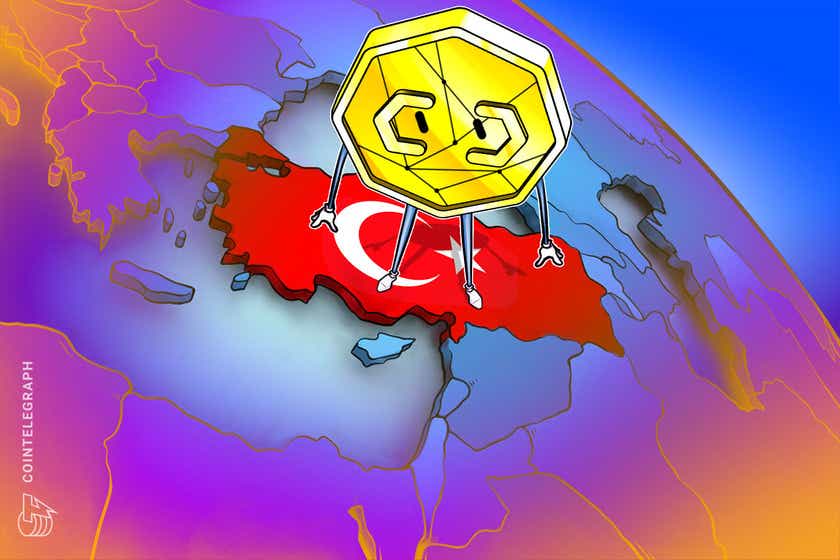Ethereum Classic price has nearly doubled days after Digital Currency Group’s $50M bet
Ethereum Classic (ETC) reached its highest level in almost three weeks Wednesday, buoyed by Barry Silbert-backed Digital Currency Group’s $50 million investment and by an overall cryptocurrency market recovery led by Bitcoin (BTC).
The 17th-largest cryptocurrency by market value traded as high as $63.19 — a nearly 98% rise from its June 22 low of $31.91. Meanwhile, the market value of all the Ethereum Classic tokens in circulation crossed $7.53 billion.
— Hsaka (@HsakaTrades) June 30, 2021
Digital Currency Group (DCG) revealed on June 21 that it has authorized the purchase of up to a total of $50M worth of shares of Grayscale Ethereum Classic Trust (OTCQX: ETCG). Grayscale is a New York-based investment firm that provides accredited investors access to digital currency products in the form of traditional securities.

On the day of the announcement, Ethereum Classic fell by 22.56%, much in line with the rest of the cryptocurrency market, which, in turn, was responding to China’s increasing crackdown on the regional crypto sector, including a complete ban of mining-related activities.
But despite the heavy sell-off, the Bitcoin and altcoin markets bounced back in tandem. Traders particularly recognized buying opportunities in the Bitcoin market as BTC/USD slipped below $30,000—a psychological support level that lately kept the pair’s downside bias from flourishing any deeper.

Meanwhile, altcoins merely tailed the Bitcoin rebound owing to their high correlation with the top digital asset.
According to data provided by Crypto Watch, the 30-day correlation efficiency between Bitcoin and Ethereum’s Ether (ETH) was 0.83 on Wednesday. A reading of 1 represents a perfect positive correlation between two assets.
Copycat hard fork
ETC’s gains also appeared in days leading up to a major Ethereum Classic blockchain upgrade in July.
In detail, Ethereum Classic emerged from a controversial blockchain split that followed an approximately $150 million hack on the Ethereum-based DAO project in April 2016. The Vitalik Buterin team proposed to wipe out the attack from the Ethereum network history — a ledger rewrite that portrayed Ethereum as a centralized blockchain.
That led to the formation of two Ethereum camps: one that supported the reverting of chain and the other that didn’t. In the end, the differences led to the formation of two competing yet independent Ethereum chains, one of them being the Ethereum Classic.
ETC’s structure as a blockchain project varies from its competitors. Unlike Ethereum, ETC incorporates multiple development teams, including IOHK, ETC Cooperative, ETC Labs, etc. In general, most of these teams have focused on providing scaling solutions.
At the same time, their priority also remains to improve development tools (SDKs) and promoting cross-chain transactions so other projects can also build on Ethereum Classic.
On June 10, Steven Lohja, the lead developer at Mantis IOHK, announced to upgrade the Ethereum Classic blockchain with a hard fork called Magneto. The major update, as Lohja confessed, would be inclusive of the Ethereum Berlin upgrade features introduced earlier this year.
The Ethereum Classic’s improvement proposals tend to improve the blockchain’s network security while cutting down on its gas fees — it does so by storing addresses and keys in one place for users to access with a single transaction.
The ETC hard fork will go live in July, much in sync with Ethereum’s London upgrade around the same period.
ETC technical setup
The latest ETC/USD rebound has come closer to invalidating a classic bearish setup that prevailed earlier.

The ETC/USD exchange rate bounced mid-way upon breaking its previously prevailing descending triangle setup. The pair found support right above its 200-day simple moving average (200-day SMA; the orange wave in the chart above) and moved higher to close above the triangle support around $51.77.
What’s more, the rebound flipped ETC/USD’s 20-day exponential moving average (20-day EMA; the green wave) from resistance to support. It now appears to do the same with the 50-day SMA (the blue wave) acting as resistance.
On the other hand, adjusting the triangle’s support trendline lower makes it appear like a bullish falling wedge pattern.

ETC/USD has broken bullish out of the pattern, much in line with its classic definition. A strong follow-through could have the pair rise by as much as the maximum Wedge height, i.e., the total maximum distance between its upper and lower trendline. It comes to be around $86.
That shifts the ETC/USD wedge profit target near $130.
Conversely, a potential reversal from 50-day SMA could have ETC/USD test the 20-day EMA as its interim support. Such a move would also risk invalidating the falling wedge structure.
The views and opinions expressed here are solely those of the author and do not necessarily reflect the views of Cointelegraph.com. Every investment and trading move involves risk, you should conduct your own research when making a decision.









